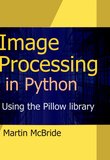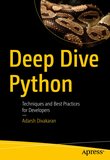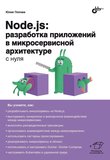-
.NET (.NET Core)
-
1C
-
APL
-
AWK
-
Agda
-
Agile/Scrum
-
Alef
-
Assembler
-
Basic
-
Beta Programming Language
-
Big Data/DataScience
-
C
-
C#
-
C++
-
CSS
-
Cobol
-
Crystal
-
D
-
Dart
-
DataBase (SQL)
-
Delphi
-
F#
-
Flutter
-
Fortran
-
GPT/AI/ИИ
-
GameDev
-
Git
-
Go (Golang)
-
HTML
-
Hacking and Security
-
Haskell
-
Java
-
JavaScript (JS)
-
Julia
-
Kotlin
-
Machine Learning (ML)
-
Natural language processing (NLP)
-
PHP
-
Pascal
-
Python
-
R
-
Ruby
-
Rust
-
Scratch
-
Swift
-
UML
-
UX/UI
-
Visual Basic
-
Wolfram
-
XML
-
АСУ
-
Проектирование/System Design
-
Сети/Network
-
Схемотехника/электронные схемы
-
.NET (.NET Core)
-
1C
-
APL
-
AWK
-
Agda
-
Agile/Scrum
-
Alef
-
Assembler
-
Basic
-
Beta Programming Language
-
Big Data/DataScience
-
C
-
C#
-
C++
-
CSS
-
Cobol
-
Crystal
-
D
-
Dart
-
DataBase (SQL)
-
Delphi
-
F#
-
Flutter
-
Fortran
-
GPT/AI/ИИ
-
GameDev
-
Git
-
Go (Golang)
-
HTML
-
Hacking and Security
-
Haskell
-
Java
-
JavaScript (JS)
-
Julia
-
Kotlin
-
Machine Learning (ML)
-
Natural language processing (NLP)
-
PHP
-
Pascal
-
Python
-
R
-
Ruby
-
Rust
-
Scratch
-
Swift
-
UML
-
UX/UI
-
Visual Basic
-
Wolfram
-
XML
-
АСУ
-
Проектирование/System Design
-
Сети/Network
-
Схемотехника/электронные схемы
Меню
Full Stack Django and React: Get hands-on experience in full-stack web development with Python, React, and AWS

Автор: Mangabo Kolawole
Дата выхода: 2023
Издательство: O’Reilly Media, Inc.
Количество страниц: 432
Размер файла: 9,5 МБ
Тип файла: PDF
Добавил: codelibs
Django developers often need to rely on frontend developers to build a client-side solution for their web apps. By combining the capabilities of React with Django, this book creates a complete learning path to go from being a backend developer to a full stack developer in no time. This book will help you use React to build state-of-the-art UI layouts and Django to create an immaculate backend. This web development book will help you discover the full potential of combining the dual power of the two most popular frameworks – React and Django. You’ll build full stack applications, including a RESTful API in the backend and an intuitive frontend, while exploring the advanced features of both frameworks. You’ll also explore how the dynamic functionality of the React framework can be used to build your frontend systems and how the ORM layer of Django helps in simplifying database interactions. This will in turn boost the development process for building the backend and facilitate the building of full stack applications. By the end of the book, you will be able to create a dynamic full stack app starting from scratch on your own.
Creating a Django Project
Django is one of the most famous backend frameworks written in Python and is often used to build simple or complex web applications. As for React, it’s one of the most widely used JavaScript libraries to create reactive and powerful user interfaces. In this chapter, we’ll focus on Django first.
In this chapter, we’ll briefly explain software development and, in particular, backend development in the context of what we’ll be building: a social network web application with Django and React. We’ll also talk about the most common tools used for backend development in Python – here in Django. Then, we will create a Django project and explain the most important parts of a Django project. After that, we’ll connect PostgreSQL to the Django project.
By the end of this chapter, you’ll understand concepts such as software development, frontend development, and backend development. You’ll also learn how to create a project in Django and start a server.
In this chapter, we’ll be covering the following topics:
- An overview of software development
- Understanding backend development
- What is an API?
- What is Django?
- Setting up the work environment
- Configuring the database









